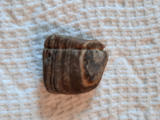

© 2024 Roger Fontaine, Designed by Bison Software

Metalman9
M
E
T
A
L
M
A
N
9


M
E
T
A
L
M
A
N
9


Ph: 204-223-7809
METALMAN9
Ph: 204-223-7809
METALMAN9
Click the date link, then a photo to start larger photo gallery & see descriptions

September 1, 2021 - Red River Mud Bars
Sept. 1, 2021
Red River Mud Bars.
The
Red
River
is
at
its
lowest
levels
since
the
dirty
30’s.
In
fact
the
river
water
intake
pipe
for
the
Letellier
water
reservoir
is
actually
out
of
the
water
as
is
the
intake
pipe
in
Morris,
Manitoba.
Both
of
these
communities
draw
river
water
into
a
reservoir
for
community
use.
Now
water
is
being
piped
in
from
the
Winkler
aquifer.
This
record
low
water
level
is
not
apparent
in
the
city
of
Winnipeg
as
the
water
levels
are being kept at normal height by use of the locks at Lockport.
This
situation
created
a
unique
opportunity
for
metal
detecting
parts
of
the
river
bed
that
would
normally
be
totally
inaccessible.
I
remembered
from
my
childhood,
spending
time
near
the
river
that
there
were
some
mud
bars
that
at
times
were
partly
visible
from
shore.
Much
to
my
delight,
I
now
found
these
same
mud
bars
to
be
totally
accessible
and
dry.
And
I
don’t
use
the
word
“dry”
lightly.
Anyone
who’s
ever
accessed
the
banks
of
the
Red
River
and
especially
the
shore
knows
just
how
impossibly
muddy
and
sticky
Red
River
jumbo
can
be.
Now
was
an
opportunity
like
no
other.
It
was also a great photo op.
I
really
didn’t
expect
much
from
a
metal
detecting
point
of
view.
I
assumed
that
anything
heavy
like
iron
and
metal
would
just
sink
in
the
wet
mud
beyond
a
detector’s
reach.
This
was
not
the
case.
I
was
quite
surprised
by
the
site
of
the
river
itself.
It
quickly
became
apparent
that
as
huge
chunks
of
river
bank
slipped
into
the
river
due
to
constant
water
erosion,
that
these
slabs
of
land,
some
still
holding
the
remnants
of
tree
stumps,
would
slide
downward
and
then
the
leading
edge
would
angle
upward
into
the
current.
And
quite
a
strong
current
there
is,
to
the
point
of
making
lots
of
burbling
noise
through
the
remaining
channels.
These
slabs
of
land
being
normally
underwater
are
havens
for
clams.
Clam
beds.
It
is
on
the
downward
side
of
these
bars
that
I
found
deep
layers
of
clamshells
and
yes,
metal
too.
The
shore
and
bank
themselves
were
also
a
good
source
of various metals finds.
The
highlights
of
the
hunt
for
metal
were
an
aluminum
bracelet
with
the
name
“Maurice”
scripted
on
it.
This
was
found
on
the
river
bank
itself.
In
the
clam
beds
on
the
mud
bars
I
found
what
appears
to
be
a
3.5
cm
copper
coin
or
copper
slug
or
possibly
the
centerpiece
of
a
surveyor
bourne.
It
weighs
23
grams.
There
definitely
is
an
edge
on
the
inside
of
the
piece
but
I
simply
cannot
make
out
any
other
distinguishing
features
due
to
heavy
corrosion.
I
later
contacted
two
coin
dealer
friends
and
crossed
my
fingers.
Both
came
back
thinking
that
the
piece
might
be
a
1797
English
Penny
sometimes
called
a
Cartwheel
Penny.
There
are
nice
pictures
of
these
on
eBay
to
compare
with.
Also
of
interest
were
two
round
bullets
or
shots
from
either a musket or black powder gun.
I
often
talk
about
how
every
location
has
its
own
flavor
or
particularity.
This
location
is
no
different.
Being
surrounded
by
agricultural
land
that
has
been
in
use
for
close
to
two
centuries,
I
found
various
agricultural
machine
parts
and
barbed
wire.
And
being
a
river,
and
rivers
being
home
to
fish,
I
also
found
lead
fishing
weights
and
rigging.
Yes,
those
are
indeed
bolts
hex
nuts
and
a
Champion
spark
plug
that
were
being
used
to
weigh
down
a
fishing
line
and
hook.
All
and
all
it
was
a
successful
day.
I
always
enjoy
finding
glass
and
animal
bones
and
unique
rocks.
I
especially
like
the
old
ornate
or
inscribed
glass
pieces.
The
brown
jug
fragment
was
from
an
era
when
Javex
came
in
large
glass
bottles.
One
another
piece, the Anheuser Busch logo is unmistakable.
I
will
certainly
return
to
the
river
and
take
full
advantage
of
these
historic
low
water
levels.
I
welcome
any
thoughts
or
ideas
as
to
how
best
to
restore
this
coin
without
further
damaging
it.
Enjoy
the
pictures.
Roger






























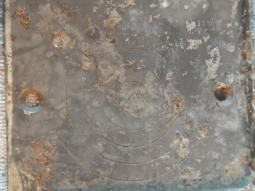

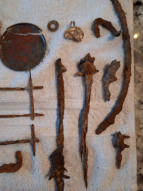
September 12, 2021 - Red River Mud Bars - Revisited
Sept. 12, 2021
Red River Mud Bars. Revisited.
The
Red
River
is
at
its
lowest
levels
since
the
1930's.
This
I
covered
in
some
detail
with
the
Sept.
1st
post.
I
was
fortunate
to
have
time
to
return
to
this
location
and
to
metal
detect
further
and
cover
new
ground.
The
water
level
was
somewhat
higher
today
due
to
recent
rains
so
I
could
not
access
the
clam
beds
that
provided
such
rich
finds
last
time.
Instead,
I
focused
on
the
actual
river
bank
just
below
where the water level would be under normal circumstances.
This
is
where
I
uncovered
my
first
find
of
the
day.
It’s
a
cast
iron
wheel
with
curving
spokes
weighing
in
at
9.5
lbs.
It
was
buried
deep.
I
can
only
speculate
as
to
its
use
and
origins.
I
have
seen
similar
wheels
on
old
steam
tractors
of
days
gone
by.
Also
found
was
what
looks
like
a
BB
pellet
and
a
musket
or
black
powder
shot
that
must
have
hit
something
really
hard
as
part
of
it
is
quite
flattened.
One
US
Lincoln
penny
was
recovered
but
the
date
is
unreadable.
I
particularly
enjoy
the
pieces
of
barbed
wire
fencing,
especially
the
joined
pieces.
Someone’s
hands
worked
and
bent
and
twisted
this
very
wire
oh
so
many
decades
ago.
Their
presence
is still there in the work.
The
Red
River
was
the
“Super
Highway”
of
the
early
days
for
the
settlers
and
was
used
for
transportation
of
people,
animals
and
goods
long
before
the
advent
of
the
railway.
Barges,
paddle
wheels
and
steam
ships
plied
the
river.
I
can
only
speculate
as
to
the
origin
of
the
steel
cable
remnant
but
it
is
incredibly
thick
and
may
well
have
been
part
of
ship’s
mooring.
Personally,
I
cannot
see
any
agricultural
use
of
such
a
thick
cable.
Any
amount
of
length
would
have been near impossible to lift by hand.
I
also
picked
up
a
fair
bit
of
glass,
some
old
and
some
maybe
not
so
old.
Another
nonmetallic
find
was
very
nice
and
interesting
conglomerate
rock.
While
digging
on
a
weak
signal
by
the
river
itself,
I
came
across
a
thick
layer
of
pure
dark
gray
clay.
No
target
was
found
???
Yet
when
I
stuck
my
Pinpointer
deep
into
this
soft
gooey
sticky
stuff,
the
Pinpointer
went
off
every
time.
Later,
and
a
foot
deeper,
same
thing.
I
suddenly
felt
like
that
guy
on
my
Humor
Page
detecting
his
own
steel
toe
boots.
I
have
no
answer
yet
to
explain
this
ghost
signal
other
than
possibly
the
metallic
content
of
the
clay
itself.
A
side
story
to
this
is
that
Tess
and
I
will
be
bringing
a
block
of
this
clay
to
a
family
member
in
North
Bay,
Ontario
this
fall
when
we
visit.
I've
since
learned
that
this
is
an
ideal
type
of
clay
for
a
potter
to
work
with.
I’m
looking
forward
to
seeing
what
she
makes
and what this clay looks like once its worked and fired.
Oh the joys of metal detecting. As a hobby, it's so much more.
Roger




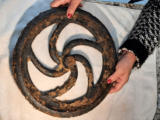









September 18, 2021 - Under a 1950’s Shed
Sept. 18, 2021
Under a 1950’s Shed.
These
next
images
and
finds
are
all
from
the
family
farm
in
the
Red
River
Valley
close
to
Letellier,
Manitoba.
Our
family
has
been
farming
here
for
generations.
Granddad
had
a
grain
shed
consisting
of
6
separate
holding
bins
built
on
site
in
the
early
1950’s.
It
was
very
modern
in
its
day.
I
remember
as
a
younger
boy
having
to
empty
these
bins
with
a
shovel
by
pushing
the
grain
to
a
single
opening
in
the
floor
so
that
it
could
be
augured
into
a
waiting
truck.
Work work work it was.
Fast
forward
some
70
years
later
and
the
grain
shed
gets
sold
and
moved.
Down
the
road
she
goes.
The
shed
was
always
well
maintained
and
sat
on
concrete
beams
of
sorts
so
the
bottom
never
touched
the
ground.
It’s
in
between
these
concrete
beams
that
I
was
asked
to
metal
detect
by
one
of
my
brothers.
I
am
grateful
for
the
invite
and
the
opportunity
and
made
a
day
of
it
with
my
wife
Tess and granddaughter Miranda. Yup… road trip to Letellier!!!
Like
with
any
site
that
one
metal
detects
on,
there
are
always
surprises
and
the
unexpected.
The
areas
underneath
the
shed,
closest
to
the
outside
walls,
were
used
as
a
sort
of
storage
space
for
wooden
planks,
iron
rods
and
the
like.
It
was
easy
to
access
and
kept
materials
dry
and
out
of
the
rain
and
snow.
Consequently,
these
first
few
feet
in
were
very
trashy
from
a
metal
detecting
point
of
view
with
nails,
nuts
and
bolts,
cans
etc.
Further
in
the
site
was
more
pristine
with
just
a
few
targets.
It
came
as
a
bit
of
a
surprise
that
this
space
between
the
concrete
had
actually
been
back
filled
with
yellow
clay.
Yellow
clay
is
very
common
in
the
area
and
can
be
found
under
the
first
few
feet
of
topsoil.
The
clay
may
have
come
from
the
depths
of
one
of
the
3
retention
ponds
that
are
dug
in
and
around
the
farm
yard.
These
ponds
would
hold
drinking
water
for
the
various
livestock
that
came
and
went
on
the
farm
over
the
years.
As
expected,
nothing
major
was
found
except
by
lucky
Miranda
who,
with
a
little
help
from
Michel
and
his
“coin
stock”,
“discovered”
a
1983
US
dollar
coin.
Well
it
made
her
day,
let’s
leave
it
at
that.
There
might
have
been
another
building
on
this
same
site
prior
to
this
shed
being
built
as
2
square
nails
were
found
at
depth
along
with
several
pieces
of
lead
sheeting
that
was
typically
used
to
patch
roofs.
Some
of
the
surprises
found
were
a
long
strip
of
iron
with
a
faded
floral
pattern.
Probably
part
of
a
sign
and
the
metal
was
repurposed.
A
second
sign
whose
letters
only
came
to
light
after a thorough cleaning said “Brantford Anthony”.
Brantford
Anthony
was
a
maker
of
truck
bodies
and
hoists
way
back
when.
The
glass
insulator
was
a
nice
surface
find
as
were
the
copper
door
knobs.
The
red
piece
of
plastic
on
a
nail
is
what’s
left
of
a fence post insulator for electric fencing.
All
and
all
it
was
a
great
day
for
everyone.
It’s
amazing
what
can
be
found in such a small storage area after 70 years of use.
Roger

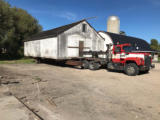

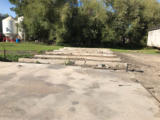



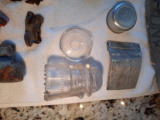
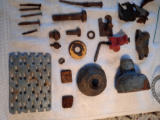









September 23, 2021 - Moose Lake Provincial Park
Sept. 23, 2021
Moose Lake Provincial Park.
Once
a
year
it
seems,
I
travel
a
long
distance
to
metal
detect
on
a
site
far
from
home.
Moose
Lake
Provincial
Park
is
located
approximately
160
km.
South
East
of
Winnipeg
off
Highway
308.
It
is
close
to
Sprague
Manitoba
and
very
close
to
the
North
West
Angle
and
Buffalo
Point
off
Lake
of
the
Woods.
(See
last
year’s
trip
to
Grand
Beach
on
Sept
29.
2020
).
By
the
way,
be
forewarned,
Highway
308
is
a
graveled
road.
The
trip
there
took
a
little
over
2
hours and 2 hours plus for the return journey, a 384 km. round trip.
I
chose
to
detect
the
beach
at
Moose
Lake
as
it
is
a
place
that
I
went
to
numerous
times
as
a
child
with
my
parents
and
where
we
camped
with
family
and
friends.
I
have
many
memories
of
Moose
Lake
but
needless
to
say,
I
didn’t
recognize
the
place.
That’s
what
50
years
plus
will
do
to
you.
But
I
found
the
beach
Ok
and
got
down
to
business
at
around
9:30
AM.
I
had
the
entire
beach
to
myself
for
the entire day. Great!
They
should
rename
this
beach
to
bobby
pin
or
bottle
cap
beach
for
the
sheer
number
of
these
that
I
found.
Bottle
caps
are
tricky
as
they
are
round
and
metallic
and
have
similar
weight
to
some
coins.
Consequently
they
register
on
the
detector
in
the
same
number
range
as
coins
do.
I
did
manage
to
find
two
Loonies,
two
dimes
and
two
pennies.
A
grand
total
of
$2.22,
plus
a
returnable
beer
can.
One does not metal detect for profit…. but it is a good hobby.
I
believe
that
this
beach
must
have
been
detected
before
but
that
must
have
been
many
years
ago.
The
reason
for
this
thought
is
that
for
a
smaller
beach,
I
did
find
lots
of
collectable
items
but
nothing
old,
the
earliest
coin
dated
1987
then
1989;
both
Loonies.
I
found
lots
of
lead
fishing
line
weights
and
rusted
out
hooks
and
4
different
firearm
shell
casings.
At
two
different
locations
on
the
beach,
I
found
tiny
hexagon
(6
sided)
stainless
steel
pieces
that
I
can
only
assume
were
worn
as
an
earring
or
piercing
but
my
wife
says
that
they
are
most
likely
a
fabric
snap
or
ornament.
The
jury
is
out
on
these
but
just
think
of
the
odds
of
matching
them
up
again.
Also,
notice
the
fancy
cut
glass
ornaments
on
one
of
the
bobby
pins.
Cool Eh!
A
real
special
find
was
the
rock
that
looks
like
wood
grain.
It
has
a
thin
straight
cut
all
the
way
around,
not
a
natural
feature
and
must
have
been
worn
as
jewelry,
possibly
on
a
nylon
string.
We
will
bring
this
item
to
our
jeweler
and
have
him
reset
the
stone
so
that
it
can
be
worn
again.
This
find
was
a
combination
of
pure
luck
and
a
sharp
eye.
What
are
the
odds
of
finding
one
specific
rock,
less
than
an
inch
across,
on
a
gravely
beach.
That
my
friend
is
the
joy
of
metal detecting.
Roger








